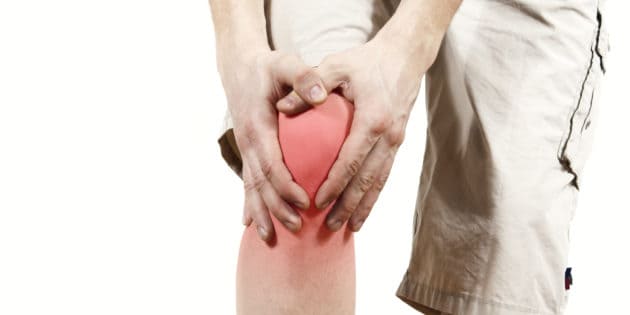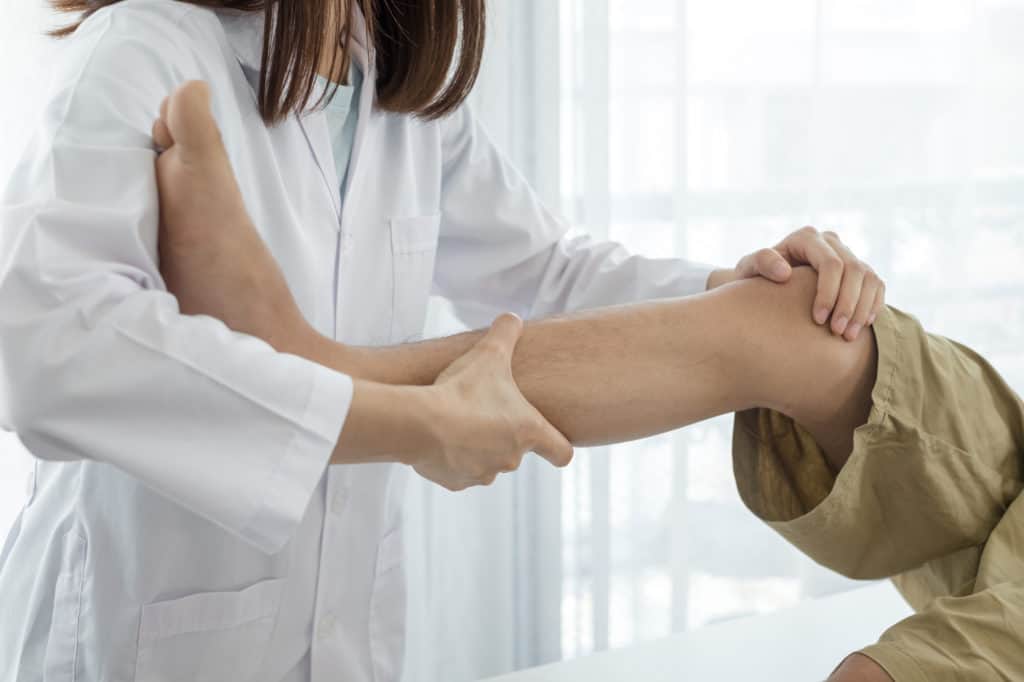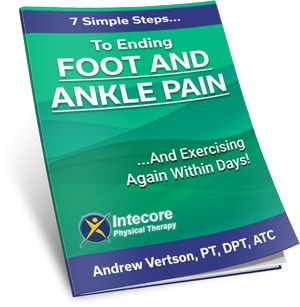
Have you got patellofemoral dysfunction or patellofemoral syndrome?
Or unidentified pain in your kneecap?
One of the more unique medical conditions that tends to afflict sportspeople and active adults is sharp pain at the front of the knee and in the surrounding kneecap (the patella). We commonly refer to this condition as a runner’s or jumper’s knee.
However, the official term is “patellofemoral syndrome.” But you don’t have to be a runner or jumper to suffer from this painful condition.
Here’s why:
What Causes Patellofemoral Syndrome?
Some of the main reasons for patellofemoral syndrome to occur are any trauma to the knee joint, including falling on or hitting the kneecap against something hard – like a concrete floor, sidewalk, or running track. While we primarily see this condition in athletes, it can occur in people of all ages and activity levels.
Sometimes, people are born with a defective kneecap that moves within the “femoral groove” (the V-shaped indentation on the top of your thighbone).
This defect then leads to excessive pressure on the kneecap’s cartilage or the femur itself, where friction occurs on the trochlear surface (the groove underneath the kneecap).
More Blogs From Intecore:
What’s The Real Cause Of Your Headache?
TMJ/TMD: The Benefits Of Seeing A Physical Therapist
Flat Feet: How Can Physical Therapy Help?
What Are The Symptoms Of Patellofemoral Dysfunction?
A wide variety of symptoms are associated with patellofemoral dysfunction/patellofemoral syndrome, ranging from mild to severe pain. In mild cases, the condition is manageable at home. With standard treatment and adequate rest, the symptoms can gradually subside.
But if the pain is severe and persists for more than a couple of weeks, you should seek treatment from a physical therapist.
Although, we would recommend that you consult with a physical therapist anyway, even if your pain is mild, to determine whether your symptoms do relate to patellofemoral dysfunction.
We find that the most identifiable symptom of patellofemoral dysfunction/syndrome is a dull pain that lingers in the front of the knee. It may occur in one knee or, at times, both knees. The pain is exacerbated with any strenuous activity or movement.
Some of the other symptoms we see are:
- Experiencing pain when doing any exercise
- Pain arising from jumping, climbing stairs, or squatting
- Pain in the knee if sedentary for a long duration and keeping the knee bent
- Popping or cracking sound when getting up from sitting or climbing stairs
Contrary to what people think, the patellofemoral syndrome is not associated with a locked knee joint. Instead, if you have this symptom, you’re more likely to have a different injury – like a meniscal tear.
Is It Patellofemoral Syndrome?
There are numerous conditions that affect the knee joint and the surrounding muscles, connective tissue, and ligaments, so it’s essential to get a proper diagnosis before assuming that you have Patellofemoral Syndrome.
We generally diagnose this condition after performing a physical examination. But first, we ask you questions about what increases or decreases the intensity of your pain, which clues us into what might be causing it.
Next, we examine your kneecap to check for instability and ask you to perform specific range-of-motion movements.
In most cases, we can diagnose patellofemoral syndrome without additional tests. Still, in some cases, we may recommend an X-ray to determine whether another injury may be contributing to your symptoms and causing pain.
Home Remedies For Patellofemoral Syndrome
Considering that the primary cause of patellofemoral syndrome is overactivity, giving the affected knee joint adequate rest can help to reduce pain and improve symptoms.
You can also try the following:
- Adopting the RICE (rest, ice, compression, and elevation) treatment.
- Taking anti-inflammatory medication (short term only).
- Shopping for orthotics (shoe inserts) that offer stability and support. These can be bought at any drugstore or customized per PT prescription.
- Getting regular sports massages to prevent taut muscles from causing pain.
- Stretch before and after sports and other workouts.
- Changing your lifestyle and daily routine to avoid all high-impact activities and replace them with low-impact versions like walking and swimming.
Stretching Exercises For Patellofemoral Syndrome
As well as the above home remedies, you can try the following exercises to improve the symptoms of patellofemoral syndrome.
These exercises stretch and strengthen the muscles that attach to the muscles that control the knee.
Doing them as regularly as possible can help reduce or eliminate the symptoms of Patellofemoral Syndrome. Stretches for the calves and hamstrings can also help to reduce the tension associated with patellofemoral dysfunction.
Leg stretching movements
This exercise is beneficial to build up the quadriceps on the upper thigh.
Sit upright in a chair and place both feet flat on the floor. Extend the right leg forward straight so that you can feel tautness in the upper thigh.
Hold the position for 6 seconds.
Then lower the foot and repeat the process 8-10 times.
Do the same movement for the other leg. Take a break for a minute and do sets more for each foot.
Quadriceps stretching
After the leg extension movements above, quadriceps stretching is ideal as it works on some of the same muscles as the previous exercise.
Place your left hand firmly on something sturdy like a table.
Grab your right foot and stretch it back to your right buttock while holding the top of the foot with the right hand.
Then point the same knee downwards so you can feel the stretch. Hold the pose for 20-25 seconds.
Release and repeat the process with the other leg and hand. Do around five sets for each foot.
Standard Medical Treatment For Patellofemoral Syndrome
If stretching, over-the-counter medication, and other home remedies don’t improve symptoms, some patients try standard medical treatment for Patellofemoral Syndrome. The solutions doctors offer to fix the issue include:
Surgical Procedures:
- Arthroscopy: In this procedure, the surgeon inserts a camera in the knee joint, looks at the live images, and removes any damaged cartilage. They may also release any twisted and taut tendons and adjust the kneecap to fit correctly within its groove.
- Tibial tubercle transfer: In this process, the kneecap is realigned. For this, the doctor first shifts the tibial tubercle (the bony part of the shin) with the patella tendon to adjust the alignment of the knee to the proper position.
However, in most cases, these procedures are not required, and the symptoms of patellofemoral dysfunction improve significantly (if not disappear altogether) with physical therapy.
Plus, when you combine physical therapy with changes to your lifestyle and routine activities and the stretching and strengthening exercises we give you to do at home, it puts you back in control and allows you to prevent any future flareup of symptoms.
Physical Therapy For Patellofemoral Dysfunction/Syndrome
We know chronic kneecap pain can be debilitating, especially if your knee pain is severe, especially if you’re generally active. Or the symptoms of patellofemoral syndrome stop you from playing sports, going to the gym, or doing other things you love, and you want to avoid invasive knee surgery. You need physical therapy.
We can quickly identify the root cause of your knee pain and determine whether it is caused by patellofemoral dysfunction, often within 20 minutes.
We then create an individualized program of therapeutic exercise and manual physical therapy to get you back to all the activities you love doing – without pain or discomfort. We also help you adapt your lifestyle and daily routine to prevent the symptoms from reoccurring in the future.
Although your pain might feel like it’s coming from your kneecap (patella), it might surprise you to learn that sometimes kneecap pain and apparent patellofemoral dysfunction may not have anything to do with your knee.
Instead, it could be caused by other issues like weak hamstrings, calves, and quads, reduced foot, and ankle mobility, or misaligned hips or knees. Or, it could be as simple as “running before you can walk,” i.e., too much exercise, too soon. We’ve all been there when we spontaneously decide we’re going to get fit.
These potential issues underlying your knee pain are why it’s crucial to get a proper diagnosis from a physical therapist. Not just assume that you can fix patellofemoral syndrome at home because the likelihood is you can’t, especially without knowing the root cause that is specific to you.
But if you’re unsure whether physical therapy is right for you, you can book a FREE 30-minute Discovery Visit to talk to a physical therapist about your knee issues and learn more about how we can help you fix them.
These sessions are limited, but they’re 100% free of charge, and there is no obligation for you to book treatment afterward if you decide it’s not right for you.
Are you ready to get out of pain and get back to sport?
Book your free consultation now.
- 7 Ways to Get Rid of Tension Headaches Naturally - July 1, 2025
- Why Are My Feet Swollen? Common Causes Explained - June 2, 2025
- What Is Restless Leg Syndrome? Symptoms, Causes, and Relief Options - May 5, 2025




















